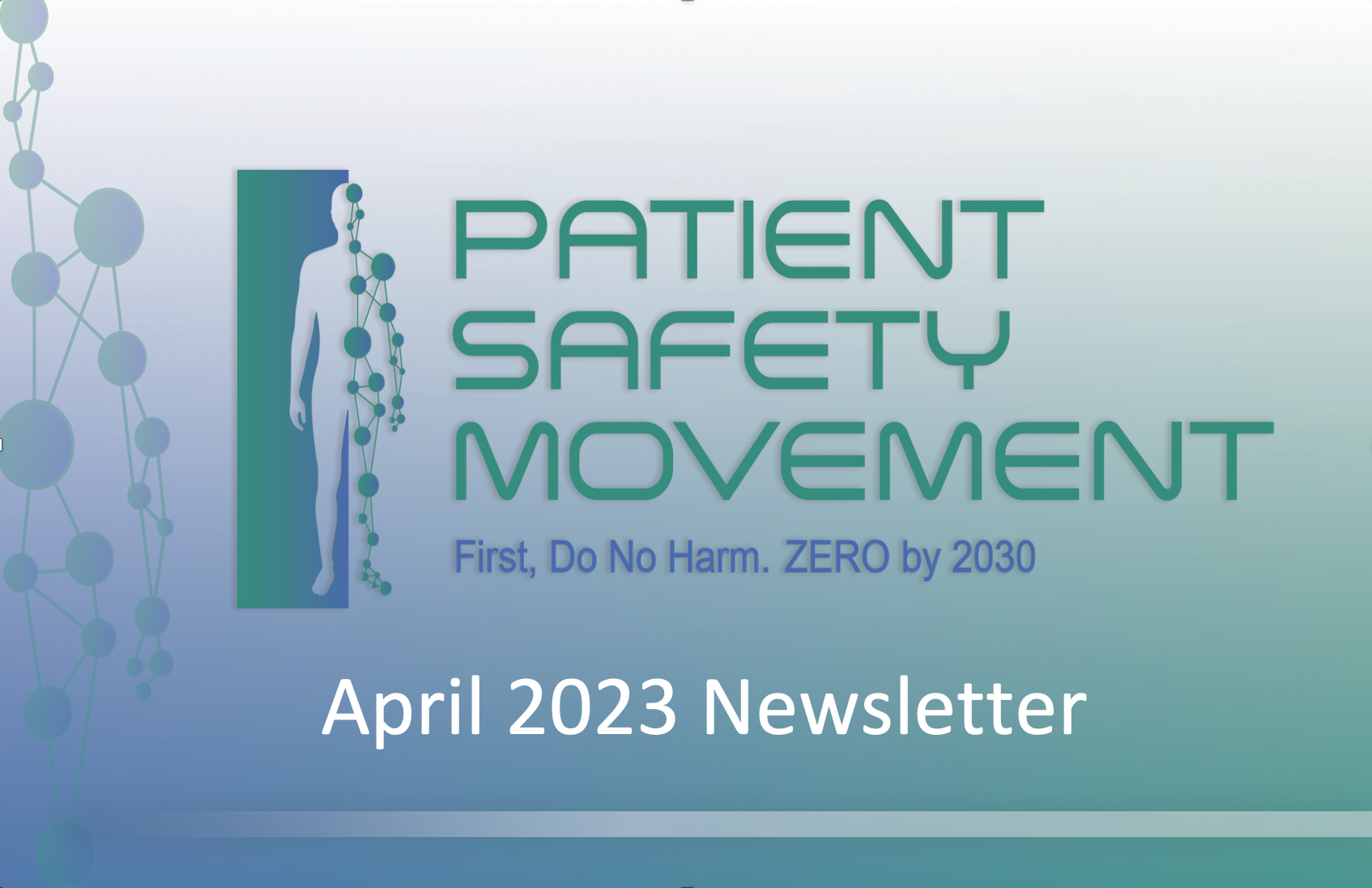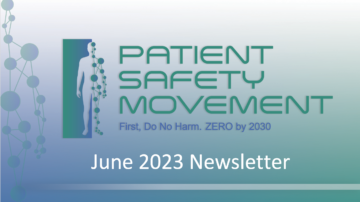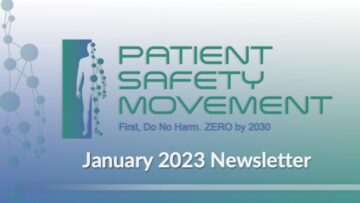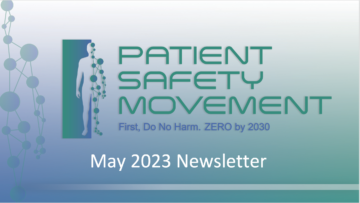Join Us for the 10th Annual World Patient Safety,
Science & Technology Summit, June 1-2, 2023
Join us in celebrating our 10th anniversary summit with world-renowned speakers and panelists discussing the latest challenges and solutions in patient safety. Learn more
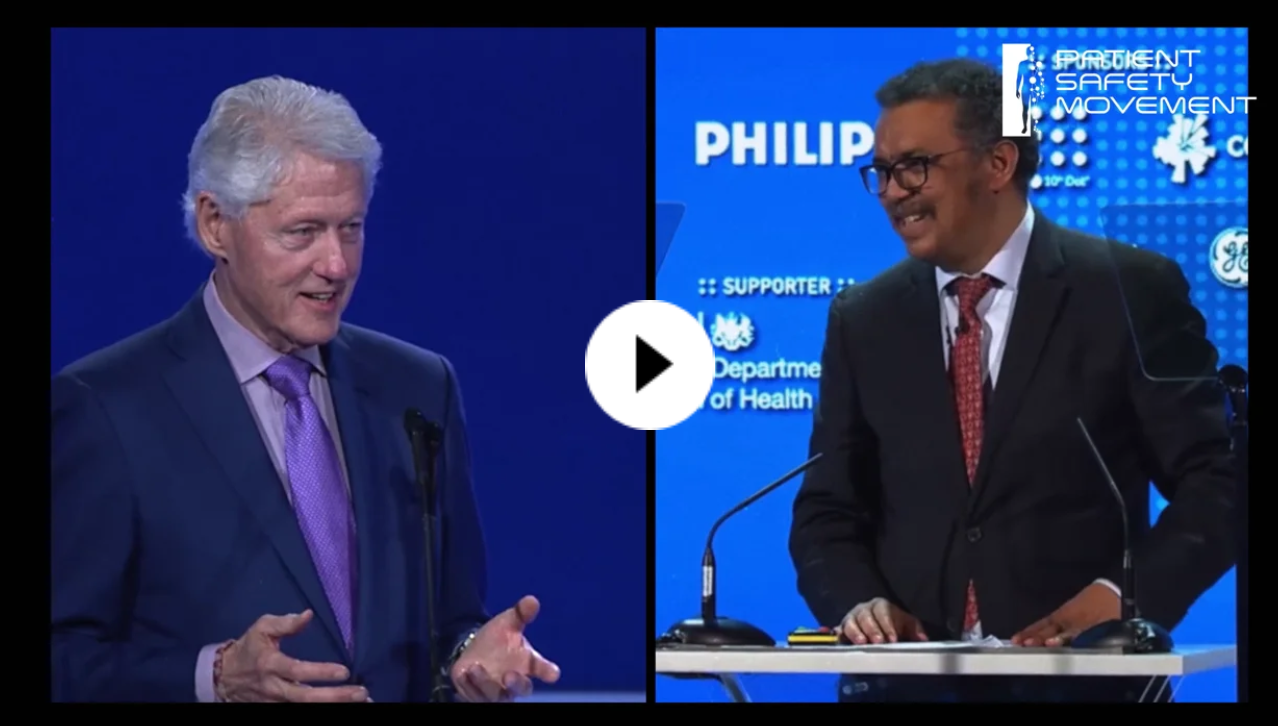
Letter from CEO

The month of April is celebrated as organ donor month. Organ donation is a selfless gift to those with organ failure. Many organ donors are healthy volunteers who are prepared to give up a healthy duplicate organ or part of an organ to save another person’s life. We in the medical profession must be
sure that this organ donor does not sustain any preventable harm by ensuring that all healthcare safety measures are adhered to. Evidence-based best practices must be in place but must also be followed. This would seem obvious and something rapidly endorsed by healthcare professionals. However, if we look at how long it took to ban cigarette smoking in airplanes, bars, and restaurants, to make seat belts mandatory in cars, despite all the compelling evidence of benefit, it is not guaranteed. It takes implementation science, a science that many medical professionals have never heard of or utilized, to get universal acceptance.
A recent manuscript in the New England Journal of Medicine by David Bates et al1 about adverse events in Massachusetts hospitals found that these adverse events still remain frequent despite the initial alert 32 years ago by Brennan, Leape, and Laird.2 We at the Patient Safety Movement Foundation have seen improvements in healthcare systems that have committed to implementing Actionable Evidence-Based Practices over the last 10 years. Many have reported significantly less preventable patient harm in their healthcare system. However, preventable harm that should be at zero level, such as wrong site surgery, still occurs in many institutions. This should be a “never event”; yet despite the implementation of mandatory “checklists” prior to starting a surgery, with the operating room team all paused while this takes place, mistakes are still made.
Why is this? Implementation science may help in reaching 100% compliance with clear evidence-based safety practices. Perhaps artificial intelligence and machine learning, all new tools gaining much publicity, some good and some bad, may be able to make a difference. In David Bates’s analysis of Massachusetts hospitals, a “Trigger Tool” was used to analyze electronic medical records, and using AI, adverse events were recorded. The potential for this is that if this analysis is made “Real Time,” adverse events currently thought to be not preventable may become preventable with a timely diagnosis and intervention.
Medical technology companies are developing new devices to assist us. For example, scanners can ensure the right drug is administered to the right patient at the right time and in the correct dose. No foreign object, such as a sponge, is left behind in a wound because the patient is scanned before the final suture is placed. The correct side is operated on the correct patient because technology can make sure the checklist is properly carried out. The patient, where appropriate, should be part of this process and have a wearable monitor of vital signs that alerts both the patient and the caregiver if parameters are falling out of line. Our cars today have better monitoring systems than most of us!
I am very optimistic that with the groundswell of patient safety organizations in the US and worldwide—especially the World Health Organization’s Global Patient Safety Action Plan, The President’s Council of Advisors on Science and Technology, subcommittee on patient safety conclusions, and the focus of the Office of the Inspector General, the AHRQ, CMS, and CDC—we can sense that all these factors are coming together, and that with transparency of outcome data becoming more available, evidence-based practices being promoted, aligned incentives in healthcare, and the potential of a National Patient Safety Board, we will finally see a leap forward in patient and healthcare worker safety.
Yours,

Michael A.E. Ramsay, MD, FRCA, Chief Executive Officer, PSMF
References:
1. Bates, D. W., et al., New England Journal of Medicine, 2023; 388:142-53.
2. Brennan, T. A., et al., New England Journal of Medicine, 1991; 324:370-6.
National Nurses Week: May 6-12, 2023
This Nurses Week, we salute all nurses around the world for the attention and care they provide to ensure safe and equitable healthcare for every patient. Nurses Day on May 6 (U.S.) kicks off National Nurses Week, which culminates with International Nurses Day on May 12, the birthday of Florence Nightingale (born May 12, 1820). A patient safety pioneer, Nightingale professionalized the training of nurses in the UK and is credited as the founder of modern nursing. Thanks to Nightingale’s insistence on handwashing and other hygiene practices during the Crimean War, she reduced the death rate of injured soldiers from 42% to 2%.
The more than 3 million nurses working in the U.S. today make up the largest portion of the healthcare workforce, with the majority (59%) of registered nurses working outside of hospital settings. Nurses Week offers a great opportunity to show nurses everywhere your appreciation for their dedication and important, often life-saving, work.
Fellowship Spotlight
Dr. Elizabeth Namugaya Igaga, an anesthesiologist and critical care intensivist from Kampala, Uganda, was part of our first Fellowship cohort. As she discusses in this video, midway through the year-long program, her participation dovetailed with an opportunity to advance in her career to become Director of Safety and Quality for Smile Train, the international nonprofit that provides cleft surgeries and care for children. Dr. Igaga also talks about how the Fellowship program gave her hope that the patient safety movement is growing and that achieving ZERO is possible.
Fellowship Application
The Patient Safety Movement Foundation offers a unique educational opportunity for healthcare professionals around the world to expand their knowledge in the theory and practice of patient safety. The 2024 Fellowship application is open from May 1 to July 1, 2023. Please visit https://psmf.org/our-impact/ if you are interested in applying for the program.
Chairman’s Column

Leadership on the Front Line
“Leadership on the front line is what really matters when we support healthcare workers” was the strapline to an article my colleagues and I wrote for IJQHC in the early days of the Covid-19 pandemic. This was a plea to all involved to ensure appropriate support
and interventions were being made available to those in the midst of the crisis at the time. In the wider context of patient safety, we also need to ask the question, what and where is the front line and who exactly is on it and who would benefit from investment in their leadership capabilities?
Is it the family who are in the midst of a crisis in their lives when an unexpected error has occurred that brings them to face the reality of a life changed and not for the better? Is it the nurse, doctor, pharmacist, or therapist who now face the reality of their own situation and that of their patient? And to whom do they turn for support and often instruction? Is it the hospital or service manager who is often placed in the position of needing to pick up the pieces and organize the necessary steps to ensure an appropriate outcome for those involved? Or is it the payer, commissioners, or insurance system relevant to the country or system involved, where it is not a partner or director but often a middle or junior manager, that must place the needs of their client first, or should they?
Every governance system in place in healthcare and other high risk industries has always recognized the importance of two major strands of endeavor in their strategies for improvement: leadership and measurement. There are many others as the developing architecture of a good governance and risk management system is put in place, but without the hierarchy of those two elements, many opportunities will be lost.
All of our health systems across the globe have invested in leadership development but not always at the most appropriate level; it is often skewed to the top or to those who are rising to the top. This is a false economy: the skills required to provide a reliant and effective system are needed by all who support and work in that system. These same skills, however, should also be offered to those affected by those systems; otherwise, they remain at a disadvantage, as they navigate their way through the minefield that is the current system of resolution when things have gone wrong.
I was reminded this last week by Sue Sheridan, a leader of family and patient empowerment and activation without peer, when she recognized the importance of leadership in a document we have been asked to review. She rightly identified the need to look outside our current domains to ensure the inclusion of all relevant stakeholders and particularly the need to activate civil society and its leadership.
So, a further plea to all involved, as we create a global system and movement for the safety of our patients, not to forget the past but learn from it at every opportunity and put in place supportive and effective strategies and interventions to develop leadership skills and capabilities for everyone that can benefit. First and foremost, leadership support for the injured or bereaved, those who will remain scarred by their own mistakes, those middle managers often involved in the wider administrative and management tasks. Similarly, for those civic leaders who may be bewildered by the expert hierarchy that our well-meaning health and legal professions sometimes use that obscures the real issue to support the disadvantaged and those without equity when things have gone wrong.
Yours,

Mike Durkin, OBE, MBBS, FRCA, FRCP, DSC
Innovation Corner
Capturing the Hospital’s Adverse Event and Disease Management Data
Medical errors are the third leading cause of death in the United States. Any meaningful and sustained reduction in these events is very challenging in a siloed environment where the hospital and its clinical departments struggle to collaborate and communicate about adverse events. In recent years, data management software has helped with providing enterprise solutions that allow physicians, nurses, pharmacists, and the entire hospital to manage all quality and safety reporting work on the same platform.
Qview Health integrates hospital-wide incident reporting (IR), physician-driven case reviews, and institutional or departmental peer review activities, including OPPE and FPPE. Case reviews, traditionally conducted in the CQI or morbidity and mortality conference, collect varying sets of data, which are dependent on the specialty of the providers. These reviews could not be performed on the same platform if not for Qview’s configurable and flexible design. This allows clinicians to collect and review meaningful data, while maintaining a secure and privileged environment for the institution. A toolkit, with internal secure messaging, an interdepartmental referral system, a conference management tool (with automated slides for conference presentations), a DICOM viewer, a document repository for every case, and a robust reporting/search capacity, provides significant additional value.
With the means to confidentially perform incident reporting and case and peer reviews, and to securely communicate across departments, delays in data collection and communication are significantly reduced. Quick identification of quality concerns allows for immediate corrective action, as well as the development and tracking of preventative protocols to reduce future occurrences. Hospital-wide use of such data management software will allow clinicians and administrators the ability to more quickly identify and correct safety concerns.
In the News
- A Wall Street Journal article, “The AI Will See You Now,” discussed the various ways doctors are using new AI technologies to improve patient outcomes and protect patient safety.
- The Joint Commission reported a 19% increase year-over-year in serious patient safety events among healthcare facilities in 2022, with falls, the most common such event, rising nearly 27%, according to Fierce Healthcare. Data is based on voluntary reports.
- Health Data Management underscored the urgent need for incident reporting due to rising patient safety issues since the pandemic and highlighted the importance of change in organizational culture to making progress in improving care.
- At Southern California Hospital at Culver City, nurses overwhelmingly ratified a new three-year contract that included strong measures to improve patient safety and staff retention, according to National Nurses United.
- Registered nurses rallied outside an Asheville, North Carolina, hospital to highlight patient safety concerns, including incidents of workplace violence, broken equipment, and long ER wait times due to understaffing, as reported by WLOS (ABC 13 News).
- About 100,000 nurses left the workforce due to pandemic-related burnout and stress, a survey found, as reported by CNN Health.
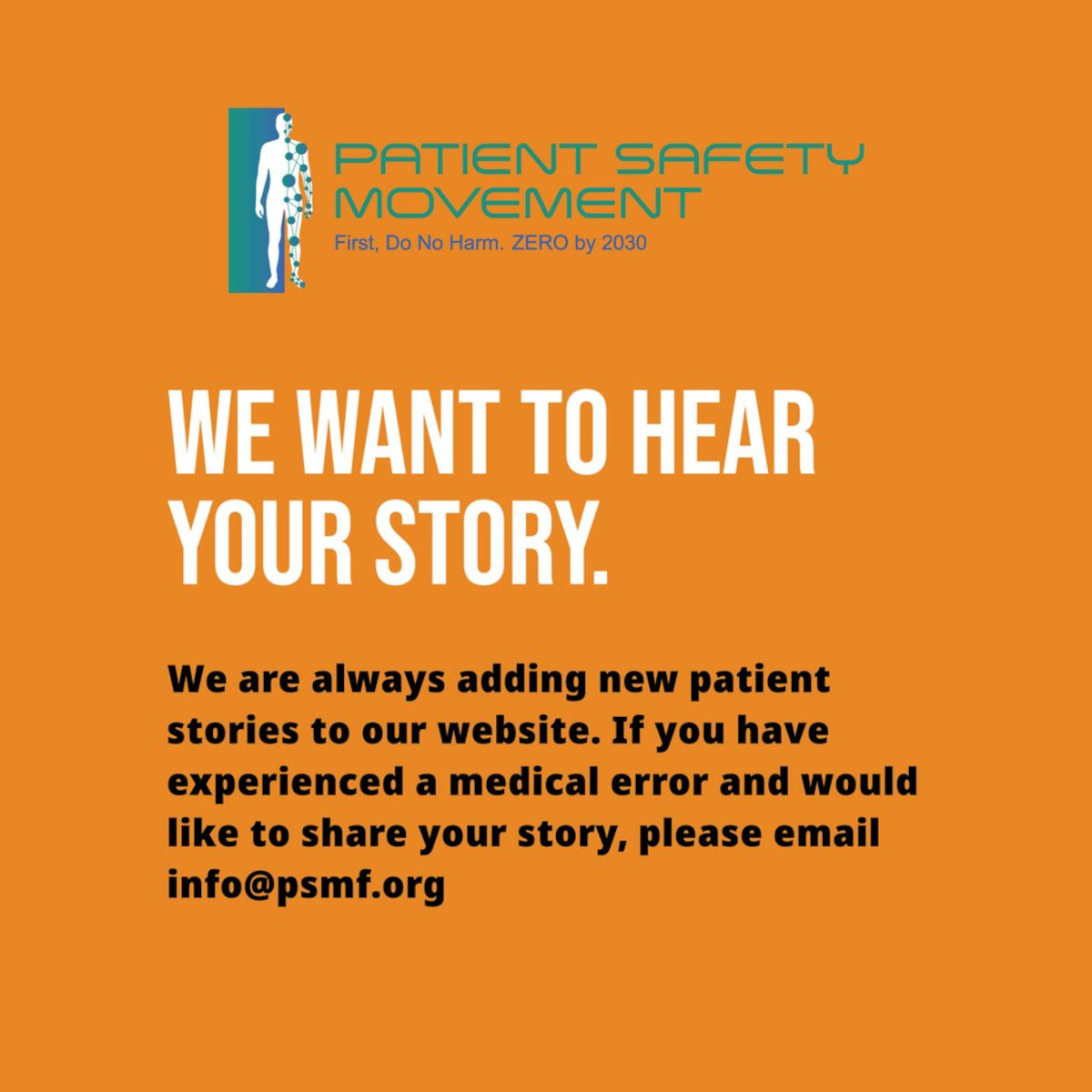
DONOR TESTIMONIALS — WHY I GIVE

GOVERNANCE BOARD
Mike Durkin, OBE, MBBS, FRCA, FRCP, DSC, Chairman of PSMF, Senior advisor on Patient Safety Policy and Leadership, Institute of Global Health Innovation, Imperial College London
Steven J. Barker, PhD, MD, Chief Science Officer, Masimo Corporation, Professor Emeritus of Anesthesiology, University of Arizona Health Sciences
Robin Betts, RN, CPHQ, MBA-HA, Vice Chair, PSMF, Vice President, Safety Quality & Regulatory Services, Kaiser Foundation Hospitals and Health Plan, Kaiser Permanente Northern California
Alicia Cole, Patient Safety Consultant
Javier T. Davila, MD, MFS, Ambassador, PSMF in Mexico, Former Medical Director, Mexican Social Security Institute, Head of Medical Education, Research and Health Public Policy
Omar Ishrak, PhD, Executive Chairman and Chairman of the Board of Directors, Medtronic, Chairman of the Board of Directors, Intel
Philip D. Lumb, MB, BS, MD, MCCM, FCCP, Professor of Anesthesiology and Trauma Surgery, Keck School of Medicine at University of Southern California
Joe Kiani, Founder and Immediate Past Chairman of PSMF, Founder, Chairman & CEO of Masimo
Sarah Kiani, Director, Masimo Foundation for Ethics, Innovation, and Competition
David B. Mayer, MD, Executive Director, MedStar Institute for Quality and Safety
Jannicke Mellin-Olsen, MD, DPH, Past President, World Federation of Societies of Anesthesiologists
Jim Messina, CEO, The Messina Group
Najmedin Meshkati, Ph.D, MS, Professor of Civil/Environmental Engineering, University of Southern California
Charlie Miceli, CPM, Treasurer, PSMF, Chief Supply Chain Officer, Network VP of University of Vermont Health Network
Michael A.E. Ramsay, MD, FRCA, Chief Executive Officer, PSMF
Abbasseh Towfigh, MPD, Executive Director and Secretary, Ayeneh Foundation
Vonda Vaden Bates, Patient Advocate, CEO, 10th Dot
OUR STORY
 In 2012, Joe Kiani founded the nonprofit Patient Safety Movement Foundation (PSMF) to eliminate preventable medical errors in hospitals. His team worked with patient safety experts from around the world to create Actionable Evidence-Based Practices (AEBP) that address the top challenges. The AEBP is available without charge to hospitals online.
In 2012, Joe Kiani founded the nonprofit Patient Safety Movement Foundation (PSMF) to eliminate preventable medical errors in hospitals. His team worked with patient safety experts from around the world to create Actionable Evidence-Based Practices (AEBP) that address the top challenges. The AEBP is available without charge to hospitals online.
Hospitals are encouraged to make a formal commitment to ZERO preventable deaths, and healthcare technology companies are asked to sign the Open Data Pledge to share their data so that predictive algorithms that can identify errors before they become fatal can be developed. The Foundation’s annual World Patient Safety, Science & Technology Summit brings together all stakeholders, including patients, healthcare providers, medical technology companies, government employers, and private payers. The PSMF was established through the support of the Masimo Foundation for Ethics, Innovation, and Competition in Healthcare. For more information, please visit psmf.org.

